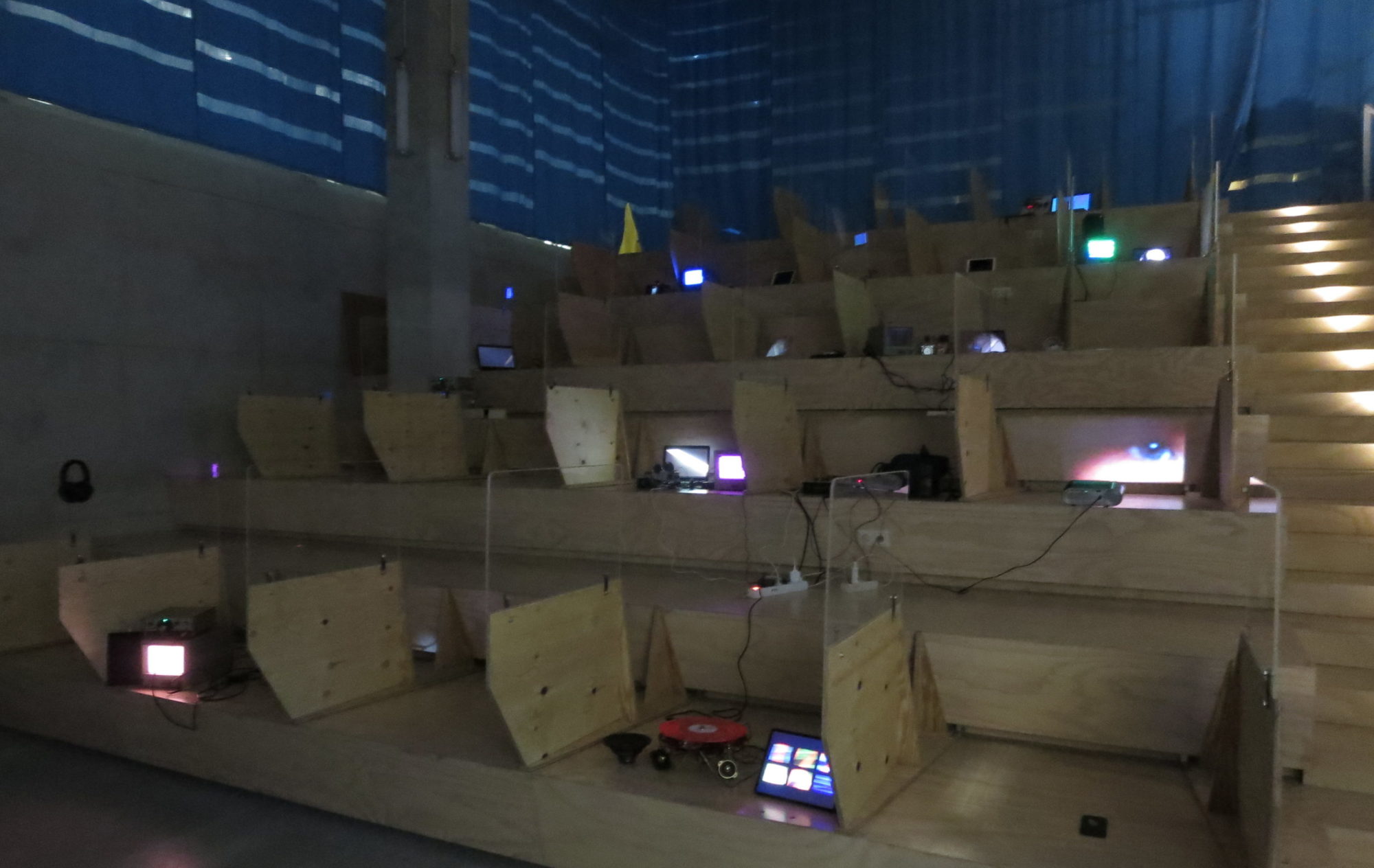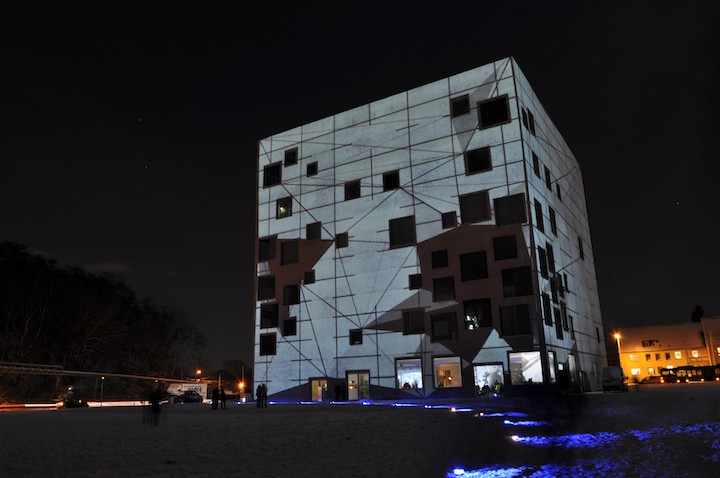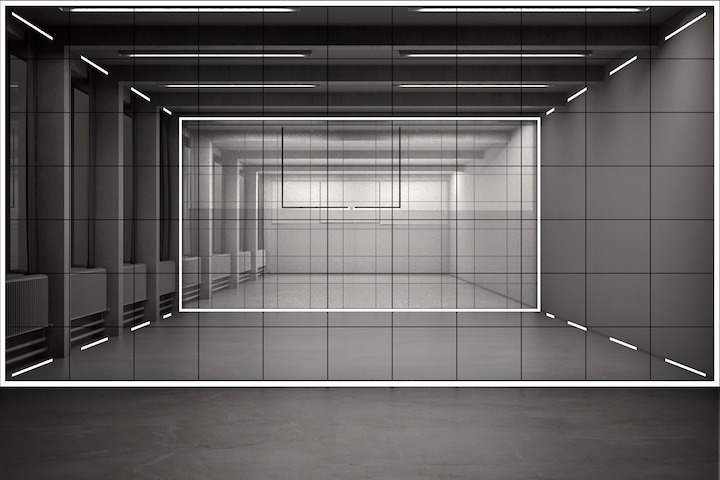info@ak83.nl, www.AK83.NL
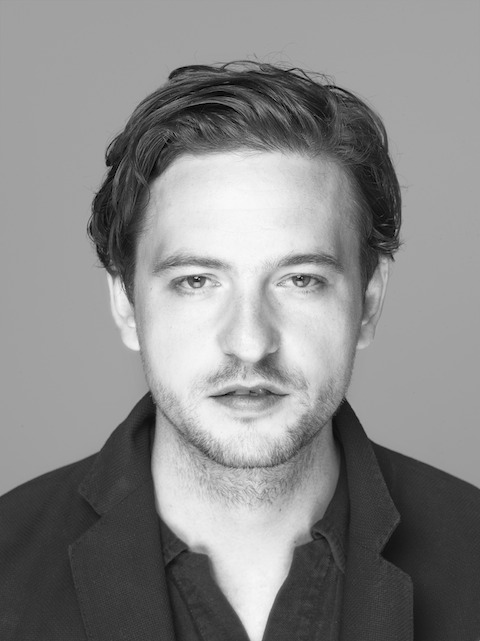
Title thesis:
The Becoming of Author of Space
How does the model of authorship function in digital media spaces compared to traditional media?
Subject:
My thesis is an investigation in the general dynamic between authorship (sending), spatial form (medium) and information (retrieval) and how this might work differently in todays’ computer culture. The assumption is that space is a medium; “just as other media types it can be instantly transmitted, stored and retrieved, compressed, reformatted, streamed, filtered, computed, programmed and interacted with. In other words, all operations which are possible with media as a result of its conversion to computer data can now also apply to (representations of) physical space.” The text asks in how far the creation and perception of such spacious media is different from traditional media forms and whether this difference may also affect the traditional author function of space in the end.
Having studied and worked for the past seven years in the field of architecture and the unstable media, I have always aimed
to achieve the convergence
of multimedia, urbanity and architecture; dealing with space and its perception in either virtual or reality. Within my work I aim to abolish the border between the physical and digital world – yet
at least blurring the transition between the two. I want to create seamless (interactive) experiences with physical space by overlaying it with digital, dynamically changing information. The result shall be
one coherent new medium that appears as a merging of physical and digital contents. Assuming that in the same way the digitalization of content in new media / web
2.0 applications had profound consequences on earlier media as print, music and video, so will the upcoming of spacious media also transform the urban sphere into an information layered, collaboratively shapable medium. Thus, the question appears, how will this new medium evolve and what is the impact on the relation between the author function of space and its audience?
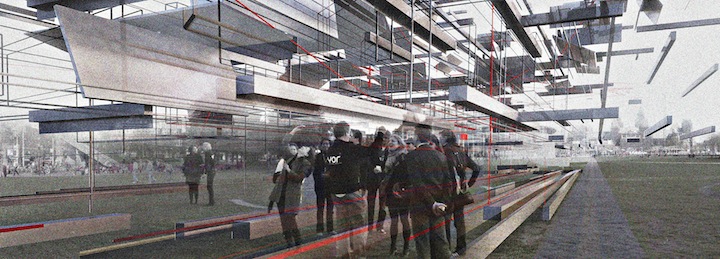 Raumstadt 2009 |
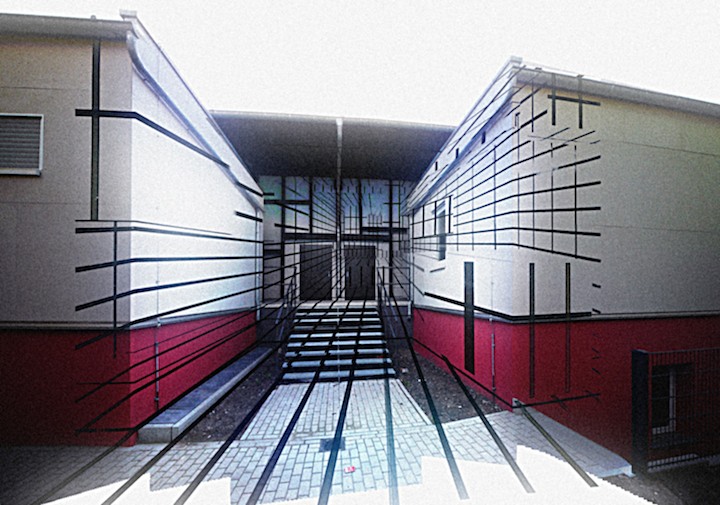 Raumstad Moers 2009 |
|
|
|
|
info@ak83.nl, www.AK83.NL

Title thesis:
The Becoming of Author of Space
How does the model of authorship function in digital media spaces compared to traditional media?
Subject:
My thesis is an investigation in the general dynamic between authorship (sending), spatial form (medium) and information (retrieval) and how this might work differently in todays’ computer culture. The assumption is that space is a medium; “just as other media types it can be instantly transmitted, stored and retrieved, compressed, reformatted, streamed, filtered, computed, programmed and interacted with. In other words, all operations which are possible with media as a result of its conversion to computer data can now also apply to (representations of) physical space.” The text asks in how far the creation and perception of such spacious media is different from traditional media forms and whether this difference may also affect the traditional author function of space in the end.
Having studied and worked for the past seven years in the field of architecture and the unstable media, I have always aimed
to achieve the convergence
of multimedia, urbanity and architecture; dealing with space and its perception in either virtual or reality. Within my work I aim to abolish the border between the physical and digital world – yet
at least blurring the transition between the two. I want to create seamless (interactive) experiences with physical space by overlaying it with digital, dynamically changing information. The result shall be
one coherent new medium that appears as a merging of physical and digital contents. Assuming that in the same way the digitalization of content in new media / web
2.0 applications had profound consequences on earlier media as print, music and video, so will the upcoming of spacious media also transform the urban sphere into an information layered, collaboratively shapable medium. Thus, the question appears, how will this new medium evolve and what is the impact on the relation between the author function of space and its audience?
 Raumstadt 2009 |
 Raumstad Moers 2009 |
|
|
|
|
